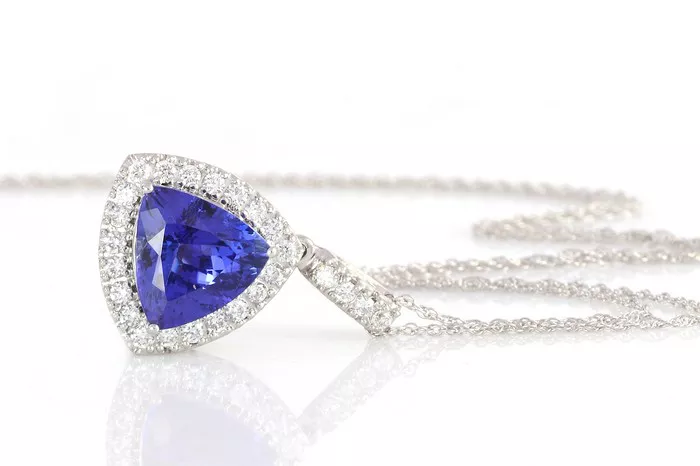Gemstones have held a timeless allure, captivating humanity with their beauty and rarity for millennia. Among the most revered gemstones are diamonds and sapphires, each possessing unique characteristics that distinguish them from one another. In this comprehensive guide, we delve into the intricacies of these two gemstones, exploring their composition, brilliance, colors, clarity, and historical significance.
Composition:
Diamonds, renowned for their brilliance and durability, are composed of a single element: carbon. Formed deep within the Earth’s mantle under extreme pressure and temperature, diamonds crystallize into the hardest natural substance known to man. This elemental purity contributes to their remarkable optical properties and enduring allure.
On the other hand, sapphires belong to the corundum family, consisting of crystalline aluminum oxide. While the most famous variety of corundum is the blue sapphire, corundum crystals come in a spectrum of colors, each attributed to trace elements present during formation. The crystalline structure of sapphires lends them strength and durability, making them ideal for jewelry and other ornamental purposes.
Brilliance & Fire:
One of the most striking differences between diamonds and sapphires lies in their optical properties, particularly their brilliance and fire.
Diamonds boast a higher refractive index compared to sapphires, measuring approximately 2.42. This elevated refractive index causes light to bend more sharply as it passes through the diamond, resulting in exceptional brilliance and a dazzling display of colorful flashes, known as fire. It is this fiery brilliance that has long captivated the hearts of gem enthusiasts and made diamonds a symbol of enduring love and commitment.
In contrast, sapphires exhibit a lower refractive index, typically falling between 1.76 and 1.77. While still possessing notable sparkle and luster, sapphires generally display less brilliance and fire compared to diamonds. Instead, sapphires often showcase a velvety sheen, particularly in darker hues, which lends them a unique and understated elegance.
Colors:
Another distinguishing feature of diamonds and sapphires is their color palette.
Diamonds are traditionally prized for their colorless or near-colorless appearance, which allows light to pass through unhindered, maximizing their brilliance. However, diamonds also come in a spectrum of fancy colors, including yellow, pink, blue, and even rare hues such as red and green. These fancy-colored diamonds derive their unique hues from structural anomalies or trace elements present during formation, each contributing to their exquisite beauty and rarity.
Sapphires, conversely, are renowned for their vivid blue hue, which has captivated admirers for centuries. This iconic blue coloration is attributed to the presence of titanium and iron within the corundum crystal lattice. However, sapphires are not limited to blue; they occur in a kaleidoscope of colors, including yellow, green, pink, purple, and orange. Known as “fancy sapphires,” these colored variations offer a diverse range of options for discerning collectors and jewelry enthusiasts alike.
Clarity:
Clarity plays a significant role in determining the value and appeal of both diamonds and sapphires.
In diamonds, clarity refers to the presence or absence of internal flaws, known as inclusions, and external blemishes. Diamonds with minimal inclusions are considered rare and highly prized, as they allow light to pass through unimpeded, maximizing brilliance and sparkle. Gemologists use a standardized grading system to assess diamond clarity, with categories ranging from “flawless” to “included.”
Sapphires, on the other hand, may exhibit a variety of inclusions, including needle-like crystals known as “silk.” These inclusions are often visible to the naked eye and can contribute to the gemstone’s overall appearance and character. In certain instances, such as the highly coveted “star sapphires,” certain types of inclusions, such as rutile needles, create mesmerizing optical phenomena known as asterism. While clarity remains a consideration in evaluating sapphire quality, the presence of certain inclusions, particularly those that enhance the gemstone’s visual appeal, can increase its value and allure.
Origin & History:
The origins and historical significance of diamonds and sapphires further highlight their distinct characteristics and cultural significance.
Diamonds, formed over 900 million years ago deep within the Earth’s mantle, have a storied history intertwined with tales of romance, power, and mystique. The earliest known diamonds were discovered in India, where they were revered for their brilliance and believed to possess magical properties. Throughout history, diamonds have adorned the crowns and regalia of monarchs and nobility, symbolizing wealth, purity, and eternal love. Today, diamonds continue to hold a prominent place in popular culture, representing enduring commitment and timeless elegance.
Sapphires, steeped in symbolism and tradition, have long been associated with qualities such as fidelity, nobility, and sincerity. The ancient Persians believed that the Earth rested on a giant sapphire, whose reflection gave the sky its blue color. In medieval Europe, sapphires were worn by clergy and royalty as a symbol of divine favor and protection. The most famous sapphire engagement ring, worn by Princess Diana and now by Catherine, Duchess of Cambridge, has cemented the sapphire’s status as a symbol of love and royalty.
In conclusion, while diamonds and sapphires share a place of prominence in the world of gemstones, each possesses unique characteristics that set it apart. From their elemental composition to their optical properties, colors, clarity, and historical significance, diamonds and sapphires offer a captivating glimpse into the beauty and diversity of the natural world. Whether adorning a piece of jewelry or serving as a symbol of love and devotion, these exquisite gemstones continue to captivate hearts and minds around the globe.

